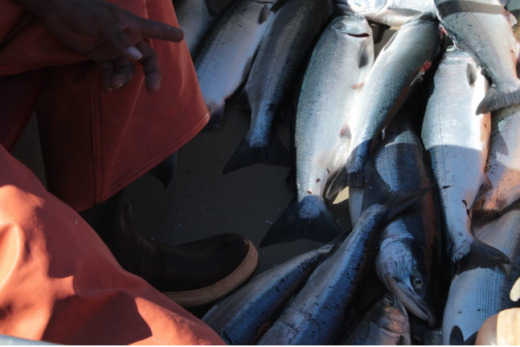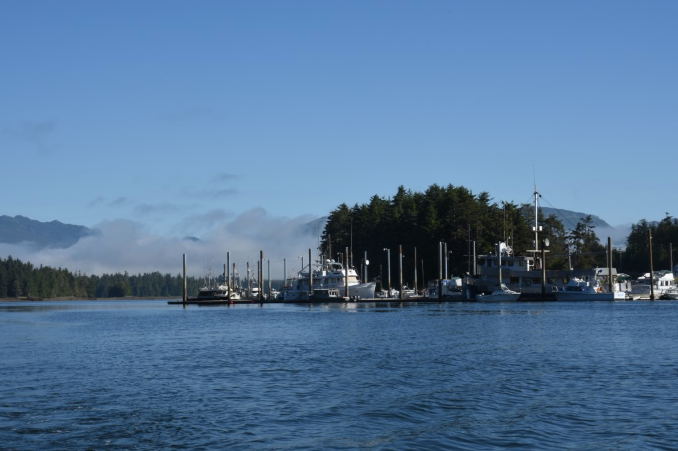When people think of Alaska, they often think of large commercial fishing boats raking in their piece of the fortune that salmon bring to the waters off the coast of Alaska.
Commercial fishing has shaped Alaska’s economy and culture, and it has provided job opportunities in places where they might not normally exist. In Southeast Alaska, commercial fishing is one of the best opportunities for employment.
When the 5 Rivers Odyssey crew visited Silver Bay Seafoods in Craig, Alaska, on Prince of Wales Island, there weren’t any fish being processed. The employees were preparing for a seining opener that would run from 5 a.m. to 8 p.m. the next day. This year’s runs have been slow, so the plant hasn’t been as busy as they have been in previous years.
In a small island town like Craig, a plant that can employ over 150 people during peak harvest season can have a big impact on the island’s employment opportunities. Seining, trolling and gillnetting are the main harvest methods used by commercial fishermen in southeast Alaska. Purse seiners use skiffs to pull a large net with a weighted bottom and buoyant top around a school of salmon. When the skiff pulls one end of the net back to the main boat, the net is then pulled together like a purse, trapping the salmon.
 Another method of commercial fishing is gill-netting, which uses a net with openings that allow only part of the targeted fish to swim through. If the fish tries to back out of the net, it is caught behind the gills. Gill-netting in Alaska is monitored closely to reduce bycatch and to determine sustainable harvest numbers. Trolling, or the use of hooks with flashers or bait that are pulled behind a boat, is another method of commercial fishing that is popular in Southeast Alaska.
Another method of commercial fishing is gill-netting, which uses a net with openings that allow only part of the targeted fish to swim through. If the fish tries to back out of the net, it is caught behind the gills. Gill-netting in Alaska is monitored closely to reduce bycatch and to determine sustainable harvest numbers. Trolling, or the use of hooks with flashers or bait that are pulled behind a boat, is another method of commercial fishing that is popular in Southeast Alaska.
In the last several decades, the commercial fishing industry and its stakeholders have made great strides toward conserving future fish populations. In 1994, the Alaska Marine Conservation Council was formed and set reducing fish bycatch, or the accidental catching of a non-target species, as one of its main priorities. Anglers and scientists are concerned with the decline in king (chinook) salmon in recent years. In 2012, the first cap on chinook bycatch was set at 25,000 fish in the Gulf of Alaska pollock fishery. In 2013, the North Pacific Fishery Management Council placed a cap of 7,500 fish on chinook salmon bycatch by non-pollock fisheries in the Gulf of Alaska.
Commercial fishing is a critical industry for Alaska, and especially southeast Alaska, where the Tongass National Forest harbors literally thousands of spawning streams for all five species of Pacific salmon, as well as sea-run cutthroat trout and steelhead. Thankfully, the Alaska Department of Fish and Game occasionally places harvest limits or closures to ensure that enough fish make it back into the streams to spawn.
In April of 2018, ADF&G placed an all-gear harvest limit on chinook salmon that was almost 80,000 fish lower than last year’s limit. The commercial fishing industry has had its fair share of challenges, but this precious resource is being managed with the future in mind. Harvest regulations and habitat management will be critical to ensure that wild salmon can always return to Southeast Alaska.



